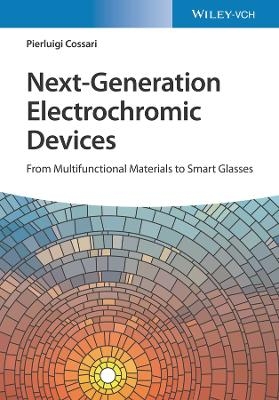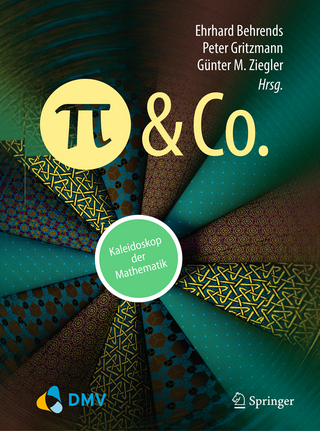
Next-Generation Electrochromic Devices
Wiley-VCH (Verlag)
978-3-527-34925-8 (ISBN)
- Noch nicht erschienen (ca. März 2025)
- Versandkostenfrei innerhalb Deutschlands
- Auch auf Rechnung
- Verfügbarkeit in der Filiale vor Ort prüfen
- Artikel merken
Pierluigi Cossari is a researcher at Institute of Nanotechnology of CNR (Nanotec). After obtaining his degree in Chemistry and Pharmaceutical Technology from Sapienza University of Rome, he spent two years at Institute of Nanostructured Materials CNR to conduct research activity on polymers and nanocomposites materials. He earned his PhD in Nanotechnology from the University of Genoa jointly with Marburg University majoring in the synthesis and optical spectroscopic characterization of semiconducting polymers and carbon nanostructures. His current research focuses on the development and electrochemical characterization of solid-state polymer electrolytes and electrochromic materials for next-generation electrochromic and photoelectrochromic devices.
Preface
About the Author
Acknowledgments
1. Introduction
1.1. Electrochromism and Electrochemistry: a Brief Note on the History and Recent Evolution
Part I: Materials
2. Electrochromic Materials
2.1. Inorganic Electrochromic Materials
2.2. Two Dimensional (2D) Electrochromic Materials
2.3 Organic Electrochromic Materials
3 Mixed Ion and Electron Conductors (MIECs)
3.1 Semiconducting Polymers and Small Molecules
3.2 Structure-Properties Relationship and Charge Transport in Disordered Organic Materials
3.3 Potential Impact of Mixed Conductors on the Design of new EC and Multifunctional Devices
4. Electrolytes
4.1 Liquid Electrolytes
4.2 Polymer Electrolytes: from Gel to Solid Polymers
4.3 Inorganic Electrolytes
5 Electrodes
5.1 Transparent and Conducting oxides
5.2 Carbon-Based Electrode Materials
5.3 Metal Nanowires and Metal Grids
6 Critical Material Issues
Part II: Devices
7. Device Structure: the Key Role of the Interfaces in the Device Design
7.1 Electrochromic Device
7.2 Electrochromic Multifunctional Devices
8. Thin Films Processing Technologies
8.1 Chemical Deposition
8.2 Physical Deposition
9. Analysis of Device Performance
9.1. Optical Spectroscopy
9.2 Electrochemical Analysis
9.3 Chemical and Physical Methods for Analysis of Electrochromism and Material Properties
9.4 Characterization of Mixed Ion Electronic Conduction Materials
Part III: Industrial Scale-up, Energy and Environment, Next-Generation Technologies
10 Construction of Smart Windows: From Laboratory to Industry Scale-Up
10.1 Manufacturing Processes: Materials and Deposition Techniques
10.2 Scale-up Procedures: EC Windows and Large Area PV modules
10.3 Laminated Smart Windows and Adhesive EC Smart Films
11. Energy-Efficient Glazings for Green Buildings
11.1 Energy Demand and Consumption in Buildings: Energy Saving of EC Glazings
11.2 Effect of Electrochromic Glazings on Visual Comfort: Usable Daylight Illuminance (UDI) and Discomfort Glare Index (DGI)
12 Emerging and Next-Generation Technologies for Dynamic Tintable Windows
12.1 Smart Photoelectrochromic and Thermochromic Windows: Green Technologies Towards More Sustainable Buildings
12.2 Emerging and Next-Generation Technologies
12.3 The New Era of Artificial Inteligence: Towards Immersive Reality and Invisible Technologies
Bibliography
| Erscheinungsdatum | 19.01.2024 |
|---|---|
| Verlagsort | Berlin |
| Sprache | englisch |
| Maße | 170 x 244 mm |
| Themenwelt | Sachbuch/Ratgeber ► Natur / Technik ► Naturwissenschaft |
| Naturwissenschaften ► Chemie | |
| Technik ► Elektrotechnik / Energietechnik | |
| Technik ► Maschinenbau | |
| Schlagworte | Chemie • Chemistry • Components & Devices • Electrical & Electronics Engineering • Elektrotechnik u. Elektronik • Komponenten u. Bauelemente • Materials Science • Materialwissenschaften • Optical and Non-Linear Optical Materials • Optische u. Nichtlineare Optische Materialien • Physical Chemistry • Physikalische Chemie |
| ISBN-10 | 3-527-34925-1 / 3527349251 |
| ISBN-13 | 978-3-527-34925-8 / 9783527349258 |
| Zustand | Neuware |
| Haben Sie eine Frage zum Produkt? |
aus dem Bereich


